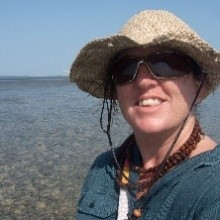Australian Marine Invertebrate Biodiversity
A special issue of Diversity (ISSN 1424-2818). This special issue belongs to the section "Marine Diversity".
Deadline for manuscript submissions: closed (31 August 2021) | Viewed by 2961
Special Issue Editors
2. Western Australian Museum, Welshpool, Perth Cultural Centre, Perth, WA 6000, Australia
Interests: coral reef; Cnidaria; monitoring; phylogenetics; Scleractinia; taxonomy; systematics
Special Issues, Collections and Topics in MDPI journals
Interests: phylogeny and systematics of aquatic invertebrates; aquatic bioinvasions
Interests: amphipod; biodiversity of marine invertebrates; biology; Crustacea; Isopod; systematics
Special Issue Information
Dear Colleagues,
An island continent where three of the world’s greatest oceans meet, Australia is skirted by over 60,000 km of soft and rocky shore habitat, along with diverse coral reef, temperate reef, and deep sea ecosystems. The variety of habitats is matched by the diversity of marine invertebrates living within them. Approximately 25,000 Australian marine invertebrates have been described, and a large proportion of these are endemic. We crudely estimate that approximately 75,000 more marine invertebrate species are yet to be discovered and/or described. Some of the new species can be found waiting and understudied on museum shelves; others remain to be discovered in undersampled habitats like the deep sea, soft sediments, and microhabitats.
In April 2020, Taxonomy Australia began scoping and preparing to launch a thrilling and ambitious mission to describe all Australian species within a generation (25 years, https://www.taxonomyaustralia.org.au/our-mission). This Special Issue is one of a portfolio of new initiatives that seeks to find ways to overcome publication bottlenecks, create new resources, and accelerate Australian taxonomy in an effort to minimise the very real risk that species may become extinct before we know about them. Key to the mission is the need to explore ways to accelerate the documentation of our biodiversity, while not compromising the quality, visibility, and utility of our resulting taxonomy.
In this Special Issue, we invite authors to contribute taxonomic and/or systematic papers that document new species or revise our understanding of marine invertebrate evolution. We also invite authors to contribute papers that seek: to create, review, or summarise key biodiversity resources (e.g., type catalogues); to improve the capture and handling of morphological trait information (e.g., new databases); and to explore ways and technologies to accelerate taxonomic discovery and species description. We also welcome collaborative contributions that review and summarise standard operating procedures for marine invertebrate biodiversity research (such as optimal specimen preservation techniques, DNA sequencing methodologies, image capture and processing, or monitoring).
While we welcome manuscripts on any taxa, we ask authors of annelid, coral-associated fauna, and gastropod papers to please consider submitting to other taxon-specific Special Issues within this journal. We look forward to shining a spotlight on the incredible diversity of marine invertebrates in Australia, and to contributing towards a step-change in the way marine biodiversity research is undertaken in Australia.
Dr. Zoe Richards
Dr. Shane Ahyong
Dr. Rachael King
Dr. Kathryn Hall
Guest Editors
Manuscript Submission Information
Manuscripts should be submitted online at www.mdpi.com by registering and logging in to this website. Once you are registered, click here to go to the submission form. Manuscripts can be submitted until the deadline. All submissions that pass pre-check are peer-reviewed. Accepted papers will be published continuously in the journal (as soon as accepted) and will be listed together on the special issue website. Research articles, review articles as well as short communications are invited. For planned papers, a title and short abstract (about 100 words) can be sent to the Editorial Office for announcement on this website.
Submitted manuscripts should not have been published previously, nor be under consideration for publication elsewhere (except conference proceedings papers). All manuscripts are thoroughly refereed through a single-blind peer-review process. A guide for authors and other relevant information for submission of manuscripts is available on the Instructions for Authors page. Diversity is an international peer-reviewed open access monthly journal published by MDPI.
Please visit the Instructions for Authors page before submitting a manuscript. The Article Processing Charge (APC) for publication in this open access journal is 2600 CHF (Swiss Francs). Submitted papers should be well formatted and use good English. Authors may use MDPI's English editing service prior to publication or during author revisions.
Keywords
- marine invertebrates
- Australia
- biodiversity
- taxonomy and systematics
- monitoring








